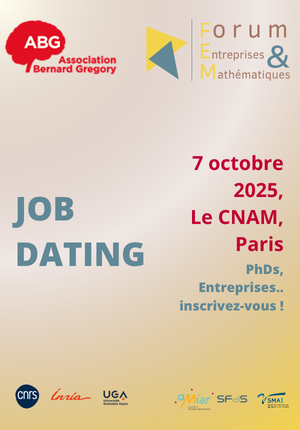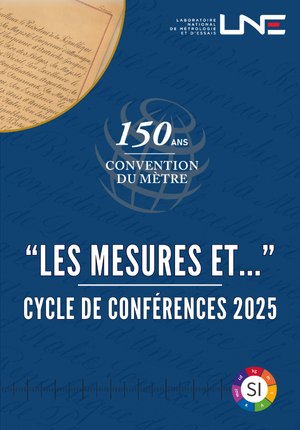Propriétés topologiques de nanohexagones de bismuth // Probing the topological properties of bismuth nanohexagons
|
ABG-128083
ADUM-60738 |
Sujet de Thèse | |
| 23/01/2025 |
Université Paris-Saclay GS Physique
ORSAY Cedex - France
Propriétés topologiques de nanohexagones de bismuth // Probing the topological properties of bismuth nanohexagons
- Physique
isolant topologique, physique mesoscopique
topological insulators, mesoscopic physics
topological insulators, mesoscopic physics
Description du sujet
Unidimensional conduction is extremely rare, because even a small amount of disorder tends to localise the electron wavefunction at low temperature. The recently discovered Quantum Spin Hall state, in which current is carried by “helical” 1D electrons, i.e. electrons whose spin direction is locked to their propagation direction, thereby hindering backscattering if no spin-flip mechanism is present, may be a remarkable exception to this rule.
The Quantum Spin Hall state is realized in topological materials such as specific graphene assemblies, 2D topological insulators, as well as the newly discovered 3D Second Order Topological Insulators (SOTI), which are three dimensional materials with unidimensional helical states at some of their edges. Our group discovered that bismuth was such a 3D SOTI, using experiments in which superconductivity is induced in perfectly crystalline bismuth nanowires [1-4]. Those nanowires however vary in crystalline orientation, and are rather large (200 nm in diameter and several microns in length). This leads to many non-topological surface and bulk states, that coexist with the topological state. This can hinder a deeper understanding of the topological properties of bismuth, and motivates the search for other SOTI materials, as well as more controlled forms of bismuth.
The PhD project consists in detecting signatures of helical edge states in thin (8 nm) bismuth nanohexagons, synthesized by collaborators (ICMol Valencia, Spain [5]). To this end, several experiments will be conducted, from low temperature transport measurements with different electrodes configurations and materials (non-superconducting or superconducting), to high sensitivity detection of orbital moments due to currents circulating around the edges of the hexagons (see figure).
------------------------------------------------------------------------------------------------------------------------------------------------------------------------
------------------------------------------------------------------------------------------------------------------------------------------------------------------------
Unidimensional conduction is extremely rare, because even a small amount of disorder tends to localise the electron wavefunction at low temperature. The recently discovered Quantum Spin Hall state, in which current is carried by “helical” 1D electrons, i.e. electrons whose spin direction is locked to their propagation direction, thereby hindering backscattering if no spin-flip mechanism is present, may be a remarkable exception to this rule.
The Quantum Spin Hall state is realized in topological materials such as specific graphene assemblies, 2D topological insulators, as well as the newly discovered 3D Second Order Topological Insulators (SOTI), which are three dimensional materials with unidimensional helical states at some of their edges. Our group discovered that bismuth was such a 3D SOTI, using experiments in which superconductivity is induced in perfectly crystalline bismuth nanowires [1-4]. Those nanowires however vary in crystalline orientation, and are rather large (200 nm in diameter and several microns in length). This leads to many non-topological surface and bulk states, that coexist with the topological state. This can hinder a deeper understanding of the topological properties of bismuth, and motivates the search for other SOTI materials, as well as more controlled forms of bismuth.
The PhD project consists in detecting signatures of helical edge states in thin (8 nm) bismuth nanohexagons, synthesized by collaborators (ICMol Valencia, Spain [5]). To this end, several experiments will be conducted, from low temperature transport measurements with different electrodes configurations and materials (non-superconducting or superconducting), to high sensitivity detection of orbital moments due to currents circulating around the edges of the hexagons (see figure).
------------------------------------------------------------------------------------------------------------------------------------------------------------------------
------------------------------------------------------------------------------------------------------------------------------------------------------------------------
Début de la thèse : 01/10/2025
WEB : https://equipes2.lps.u-psud.fr/meso/
The Quantum Spin Hall state is realized in topological materials such as specific graphene assemblies, 2D topological insulators, as well as the newly discovered 3D Second Order Topological Insulators (SOTI), which are three dimensional materials with unidimensional helical states at some of their edges. Our group discovered that bismuth was such a 3D SOTI, using experiments in which superconductivity is induced in perfectly crystalline bismuth nanowires [1-4]. Those nanowires however vary in crystalline orientation, and are rather large (200 nm in diameter and several microns in length). This leads to many non-topological surface and bulk states, that coexist with the topological state. This can hinder a deeper understanding of the topological properties of bismuth, and motivates the search for other SOTI materials, as well as more controlled forms of bismuth.
The PhD project consists in detecting signatures of helical edge states in thin (8 nm) bismuth nanohexagons, synthesized by collaborators (ICMol Valencia, Spain [5]). To this end, several experiments will be conducted, from low temperature transport measurements with different electrodes configurations and materials (non-superconducting or superconducting), to high sensitivity detection of orbital moments due to currents circulating around the edges of the hexagons (see figure).
------------------------------------------------------------------------------------------------------------------------------------------------------------------------
------------------------------------------------------------------------------------------------------------------------------------------------------------------------
Unidimensional conduction is extremely rare, because even a small amount of disorder tends to localise the electron wavefunction at low temperature. The recently discovered Quantum Spin Hall state, in which current is carried by “helical” 1D electrons, i.e. electrons whose spin direction is locked to their propagation direction, thereby hindering backscattering if no spin-flip mechanism is present, may be a remarkable exception to this rule.
The Quantum Spin Hall state is realized in topological materials such as specific graphene assemblies, 2D topological insulators, as well as the newly discovered 3D Second Order Topological Insulators (SOTI), which are three dimensional materials with unidimensional helical states at some of their edges. Our group discovered that bismuth was such a 3D SOTI, using experiments in which superconductivity is induced in perfectly crystalline bismuth nanowires [1-4]. Those nanowires however vary in crystalline orientation, and are rather large (200 nm in diameter and several microns in length). This leads to many non-topological surface and bulk states, that coexist with the topological state. This can hinder a deeper understanding of the topological properties of bismuth, and motivates the search for other SOTI materials, as well as more controlled forms of bismuth.
The PhD project consists in detecting signatures of helical edge states in thin (8 nm) bismuth nanohexagons, synthesized by collaborators (ICMol Valencia, Spain [5]). To this end, several experiments will be conducted, from low temperature transport measurements with different electrodes configurations and materials (non-superconducting or superconducting), to high sensitivity detection of orbital moments due to currents circulating around the edges of the hexagons (see figure).
------------------------------------------------------------------------------------------------------------------------------------------------------------------------
------------------------------------------------------------------------------------------------------------------------------------------------------------------------
Début de la thèse : 01/10/2025
WEB : https://equipes2.lps.u-psud.fr/meso/
Nature du financement
Précisions sur le financement
Europe - ERC (European Research Council)
Présentation établissement et labo d'accueil
Université Paris-Saclay GS Physique
Etablissement délivrant le doctorat
Université Paris-Saclay GS Physique
Ecole doctorale
564 Physique en Ile de France
Profil du candidat
Formation souhaitée en matière condensée ou physique quantique
Masters Degree with Quantum physics and/or Condensed Matter Physics
Masters Degree with Quantum physics and/or Condensed Matter Physics
31/07/2025
Postuler
Fermer
Vous avez déjà un compte ?
Nouvel utilisateur ?
Besoin d'informations sur l'ABG ?
Vous souhaitez recevoir nos infolettres ?
Découvrez nos adhérents
 Institut Sup'biotech de Paris
Institut Sup'biotech de Paris  ASNR - Autorité de sûreté nucléaire et de radioprotection - Siège
ASNR - Autorité de sûreté nucléaire et de radioprotection - Siège  CASDEN
CASDEN  Laboratoire National de Métrologie et d'Essais - LNE
Laboratoire National de Métrologie et d'Essais - LNE  TotalEnergies
TotalEnergies  MabDesign
MabDesign  Aérocentre, Pôle d'excellence régional
Aérocentre, Pôle d'excellence régional 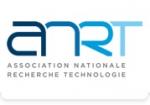 ANRT
ANRT 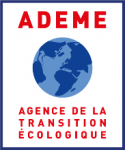 ADEME
ADEME 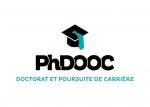 PhDOOC
PhDOOC  Groupe AFNOR - Association française de normalisation
Groupe AFNOR - Association française de normalisation  Généthon
Généthon  ONERA - The French Aerospace Lab
ONERA - The French Aerospace Lab  CESI
CESI  Tecknowmetrix
Tecknowmetrix  Nokia Bell Labs France
Nokia Bell Labs France  Ifremer
Ifremer  MabDesign
MabDesign  SUEZ
SUEZ
-
Sujet de ThèseRef. 131449Paris , Ile-de-France , France
 Mines Paris - PSL, Centre PERSEE & RTE
Mines Paris - PSL, Centre PERSEE & RTEPhD CIFRE RTE - MINES PARIS: Artificial Intelligence for Renewable Energy Forecasting
Expertises scientifiques :Sciences de l’ingénieur - Energie - Mathématiques
-
EmploiRef. 132634Strasbourg , Grand Est , FranceINSERM UMR 1260
Post-doctoral opportunity in Strasbourg (France): Complex Organoids for IBD Immunotherapy
Expertises scientifiques :Biologie - Santé, médecine humaine, vétérinaire
Niveau d’expérience :Confirmé

